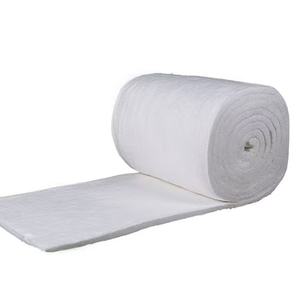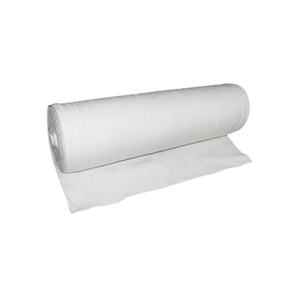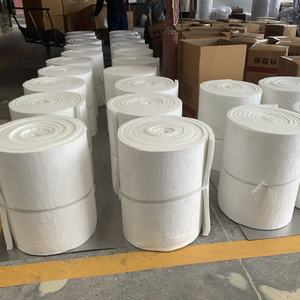Professional industry ceramic supplier, silicon nitride, silicon carbide, aluminum nitride and any other kinds of ceramics.
PRODUCT PARAMETERS
Description
Overview of Low-density ceramic fiber board
Low-density ceramic fiber board is a lightweight, high-temperature insulation material composed primarily of alumina-silica. It is manufactured through a melting and spinning or blowing process, resulting in a flexible, wool-like textile. This material is engineered to provide exceptional thermal management, conserving energy and protecting equipment in extreme temperature environments across various industries.
Features of Low-density ceramic fiber board
-
Excellent Thermal Stability: Withstands continuous operating temperatures up to 1260°C (2300°F) and higher for certain grades, with minimal shrinkage.
-
Low Thermal Conductivity: Provides highly efficient insulation, reducing heat loss and improving energy efficiency.
-
Lightweight & Low Heat Storage: Offers low thermal mass, enabling rapid heat-up and cool-down cycles for improved process control and energy savings.
-
Thermal Shock Resistance: Highly resistant to damage from rapid temperature changes.
-
Excellent Flexibility & Resilience: Can be fabricated into blankets, boards, papers, and textiles to fit complex shapes and applications.
-
Good Chemical Stability: Resists attack from most corrosive agents, except strong alkalis and hydrofluoric acid.
Specification of Low-density ceramic fiber board
Low-density ceramic fiber boards offer excellent high-temperature insulation. These boards are made from alumina-silica materials. They are formed using a special wet vacuum process. This process gives them a consistent, rigid structure. Their density is low, typically between 128 and 192 kilograms per cubic meter. This low density makes them very lightweight. Handling and installing them is easier. Their low mass also means less heat storage. They heat up fast. They cool down fast too. This improves energy efficiency in cyclic operations.
These boards handle extreme heat well. They resist temperatures up to 2300 degrees Fahrenheit. This makes them suitable for demanding furnace linings. They work well in kilns too. They are ideal for boiler insulation. They insulate pipes effectively. The boards resist thermal shock. Sudden temperature changes won’t crack them. Their structure stays stable. They don’t shrink much over time. This ensures long-lasting performance. They resist chemical attack. Furnace atmospheres won’t easily damage them. They have low thermal conductivity. This means they are great insulators. They help keep heat in. They save energy. They protect surrounding structures. They improve safety.
The boards are easy to cut and shape. You can cut them with regular woodworking tools. You can saw them. You can shape them on-site. This allows for precise fitting. Installation is straightforward. They can be mechanically fastened. You can use special adhesives. They fit complex geometries. They offer good compressive strength. They support light loads. They maintain their shape under stress. They provide good surface stability. They can often be used as hot-face linings. They eliminate the need for heavy refractory materials. They reduce the overall weight of the system. This lowers structural support costs. They are versatile across many industries. Metal processing uses them. Glass manufacturing uses them. Petrochemical plants use them. Power generation relies on them.
Applications of Low-density ceramic fiber board
Low-density ceramic fiber boards offer lightweight heat protection. They handle extreme heat well. Furnaces need this protection. Industrial ovens use these boards inside their walls. Kilns for ceramics use them too. Heat treating equipment relies on their insulation. These boards keep heat inside effectively. This saves significant energy. Lower fuel costs result. Power plants use them widely. Boilers need high-temperature insulation. Steam pipes benefit from ceramic fiber boards. They prevent dangerous heat loss. Gas turbines operate hotter with this insulation. Industrial exhaust systems face very high temperatures. These boards line ducts safely. They resist thermal shock effectively. Rapid heating or cooling causes less stress. This makes them very durable. Fire safety is another major use. Fire doors incorporate these boards. Fire-rated walls use them as core material. They block flames and intense heat. Electrical cabinets need fire protection. Low-density ceramic fiber boards provide this shield. They also dampen sound effectively. Noisy industrial machines benefit from this. Their lightweight nature is a key advantage. Installation is easier. Structural support needs are lower. Cutting and shaping them is simple. Custom sizes fit specific equipment needs. They resist most chemicals. Furnace atmospheres rarely damage them. Maintenance needs are minimal. They last a long time.
Company Profile
Tanki New Materials Co.Ltd. focus on the research and development, production and sales of ceramic products, serving the electronics, ceramics, chemical and other industries. Since its establishment in 2015, the company has been committed to providing customers with the best products and services, and has become a leader in the industry through continuous technological innovation and strict quality management.
Our products includes but not limited to Aerogel, Aluminum Nitride, Aluminum Oxide, Boron Carbide, Boron Nitride, Ceramic Crucible, Ceramic Fiber, Quartz Product, Refractory Material, Silicon Carbide, Silicon Nitride, ect. please feel free to contact us.

Payment Methods
T/T, Western Union, Paypal, Credit Card etc.
Shipment Methods
By air, by sea, by express, as customers request.
5 FAQs of Low-density ceramic fiber board
Low-density ceramic fiber board is insulation material. People make it from ceramic fibers. They compress these fibers into a board shape. It’s very light. This makes it easy to handle and install.
What is low-density ceramic fiber board?
It’s a special board for high-temperature insulation. It keeps heat in or out. Factories use it in furnaces, kilns, and boilers. It resists very high temperatures well.
Why choose low-density board?
The low weight matters. It puts less stress on structures. It’s simpler to cut and fit. It also has good insulating power. Less dense material often traps air better. Trapped air stops heat flow.
How much heat can it take?
This depends on the exact type. Most low-density boards handle temperatures from 1260°C (2300°F) up to 1430°C (2600°F). Always check the manufacturer’s rating. Don’t exceed the listed temperature.
How do people install it?
You cut it to size. Use saws or knives. Fix it using special high-temperature anchors or adhesives. Sometimes you layer it. Make sure joints fit tightly. This stops heat leaks. Wear gloves and a mask. The fibers are irritating.
Is it safe to handle?
Handle it carefully. The fibers can irritate skin, eyes, and lungs. Always wear gloves, long sleeves, safety glasses, and a proper dust mask (like an N95). Work in a ventilated area. Clean up dust promptly.
REQUEST A QUOTE
RELATED PRODUCTS

Ceramic fiber insulation spacers

High-Temperature Ceramic Fiber Blanket Insulation: 1260°C Ceramic Fiber Wool Roll Insulation.

Ceramic fiber 1400°C aluminosilicate ceramic fiber board

1900°C Ceramic Fiber Sheet Casing for Industrial Storage Tanks.

Ceramic Fiber Modules for Furnaces and Kilns


